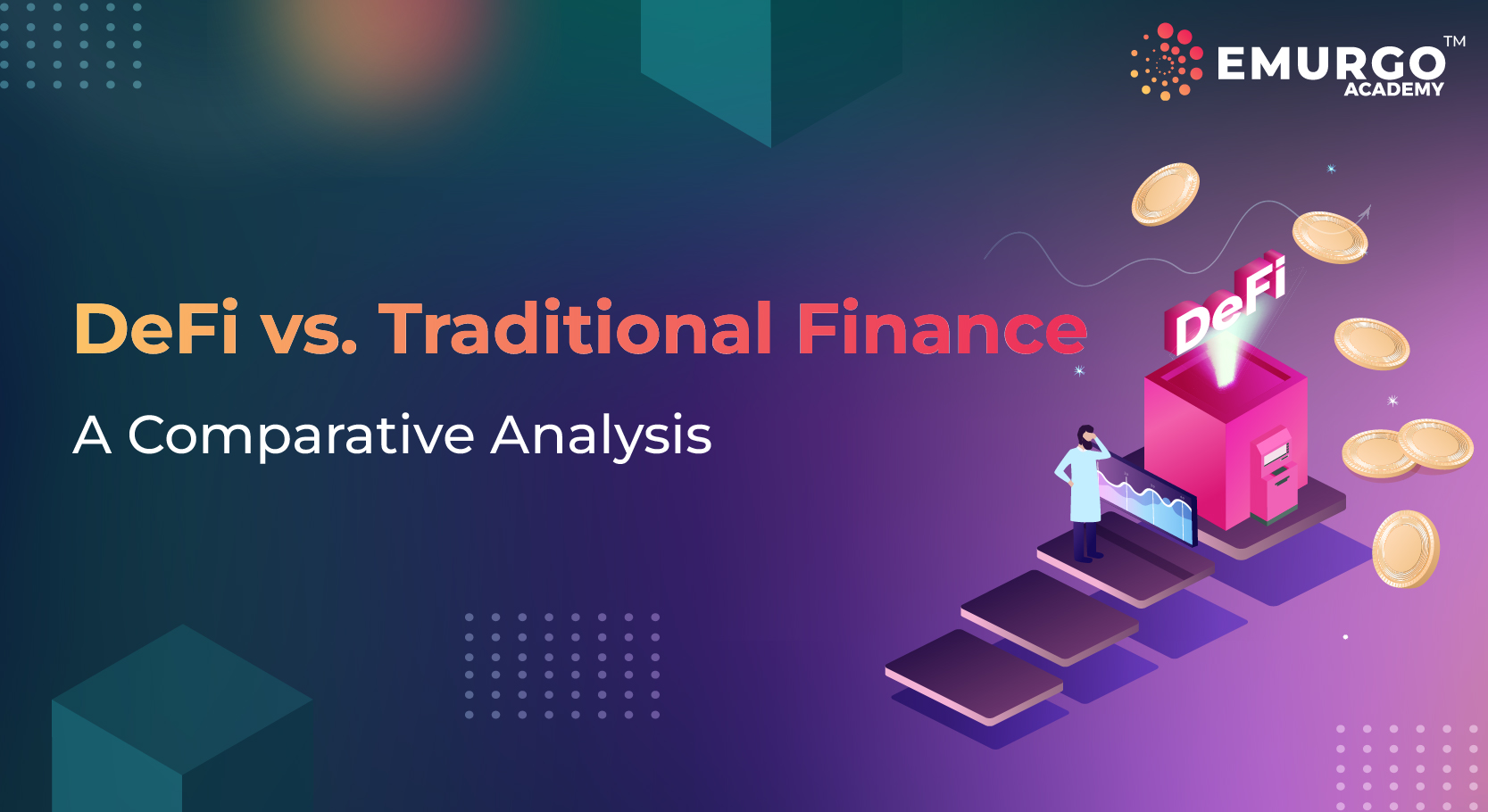The financial world has undergone a significant transformation in recent years, with the rise of decentralized finance (DeFi) challenging the traditional financial system. In this comparative analysis, we’ll explore the fundamental differences and similarities between DeFi and Traditional Finance and examine how they operate. So, without any delay let us explore DeFi vs Traditional Finance.
Differences Between DeFi vs Traditional Finance
Listed below are some of the key differences between DeFi vs. Traditional Finance. Also we will understand what DeFi and Traditional Finance stands for.
Definition and Core Concepts
Traditional Finance: Traditional Finance is the conventional financial system where centralized institutions, such as banks, manage transactions, lending, and other financial services. These institutions act as intermediaries, providing stability and security but often come with high fees and restricted access.
DeFi: DeFi, on the other hand, is a decentralized financial system built on blockchain technology. It operates without intermediaries, using smart contracts to execute transactions and automate processes. DeFi platforms aim to provide financial services in a permissionless and trustless manner, enabling users to have full control over their assets.
Accessibility and Inclusivity
Traditional Finance: Traditional Finance has long been criticized for excluding large segments of the global population due to high entry barriers, especially in developing countries. Accessing financial services often requires a solid credit history and physical presence, which many individuals lack.
DeFi: DeFi brings a revolutionary aspect of financial inclusivity, as it only requires an internet connection and a digital wallet. People without access to traditional banking services can now participate in a wide range of financial activities, including lending, borrowing, and yield farming.
Example: A farmer in a remote region can now access DeFi platforms to get a loan for agricultural equipment without relying on traditional banking institutions.
Intermediaries and Fees
Traditional Finance: Banks and financial institutions act as intermediaries in Traditional Finance, adding an additional layer of complexity and cost. These intermediaries may charge fees for various services, like wire transfers, account maintenance, or loan processing.
DeFi: DeFi eliminates the need for intermediaries, significantly reducing fees and increasing the speed of transactions. Users can directly interact with smart contracts, leading to cost savings and streamlined processes.
Example: Sending cross-border payments through a DeFi platform can be faster and cheaper compared to using traditional remittance services.
Security and Trust
Traditional Finance: Traditional Finance offers a higher degree of consumer protection through regulatory frameworks and insurance. However, the reliance on centralized institutions also poses a single point of failure and potential security risks.
DeFi: DeFi platforms rely on the security of blockchain technology and smart contracts. While they promote transparency and auditability, vulnerabilities in smart contracts have led to hacking incidents and fund losses.
Example: The decentralized nature of DeFi may enable better protection against corruption or malicious actions of centralized institutions, but users need to be cautious of potential smart contract vulnerabilities.
Innovation and Speed of Development
Traditional Finance: Traditional Finance often struggles with slow innovation due to complex bureaucracies and legacy systems. Implementing new technologies or financial products can take a significant amount of time and resources.
DeFi: DeFi is known for its rapid pace of innovation, allowing developers and entrepreneurs to create and launch new financial products quickly. This agility is a result of the open-source nature of DeFi platforms and the vibrant developer community.
Example: DeFi protocols like Uniswap, SushiSwap, and Aave continuously introduce new features and improvements, rapidly shaping the DeFi landscape.
Conclusion
In conclusion, we can say that DeFi and Traditional Finance represent two distinct approaches to the financial system. DeFi introduces increased accessibility, reduced fees, and faster innovation but also presents unique challenges in security and regulation.
While DeFi continues to disrupt the financial industry, it is crucial to strike a balance between the strengths of both systems to create a more inclusive and robust financial ecosystem.
In case you want to explore DeFi in detail, you can enroll for the Cardano DeFi Masterclass Powered by EMURGO Academy and Cardano DeFi Alliance. This masterclass will equip you to interact with different DeFi apps right from the pioneers of the DeFi ecosystem.

